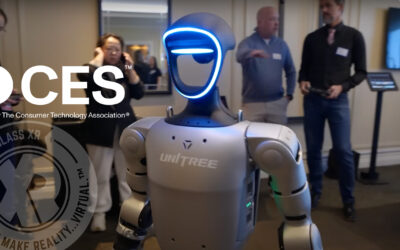Google’s New 3D Video Tour
 As of March 24th you can take a 3D video tour of one of the most secure buildings in the world. With security clearance limited to a small handful of employees, Google’s Oregon Data Center has a security system that rivals most military buildings. Featuring a bio-metric screening system, channel lock doors that only allow one person in at a time, plus a dual key system, Google has ensured that unless a person is meant to be in that room, they are not getting in.
As of March 24th you can take a 3D video tour of one of the most secure buildings in the world. With security clearance limited to a small handful of employees, Google’s Oregon Data Center has a security system that rivals most military buildings. Featuring a bio-metric screening system, channel lock doors that only allow one person in at a time, plus a dual key system, Google has ensured that unless a person is meant to be in that room, they are not getting in.
As a publicity stunt before opening two additional Data Centers, Google has decided to unleash a 3D video tour to show the public the sheer volume of their data storage services. Holding the contents of Google Maps, Google Drive, and their Cloud storage options is quite an undertaking. Until you take the 3D video tour, you can’t really grasp the volume of this center.
By allowing the public to see the 3D video tour Google strives to educate the public and their consumers about the sheer volume of their Data Centers, and also the contents. This 3D video tour is view-able on Youtube via a desktop browser or a mobile device with Google Cardboard or an equivalent.
When Particles and Virtual Reality Collide
The next 3D video tour to recently release also takes place deep underground where few eyes  have ever seen. The Large Hadron Collider, or LHC, is located deep underground in the French and Swiss borders. This enormous machine performs giant science on a minuscule scale by smashing particles together to see what smaller particles come out.
have ever seen. The Large Hadron Collider, or LHC, is located deep underground in the French and Swiss borders. This enormous machine performs giant science on a minuscule scale by smashing particles together to see what smaller particles come out.
BBC News released the 3D video tour of the largest machine in the world allows viewers to check out every inch of the mechanical giant located more than 325 feet underground. This 3D video tour comes out less than a month before LHC attempts to confirm whether a new fundamental particle has been discovered.
Bombings Hit Close To Home
Not all 3D video tours are created to entertain or provide amusement to the viewers. There are projects such as Amnesty International’s Fear of the Sky that provide both a 3D video tour and goosebumps. The war in Syria is something probably everyone has heard about, but how many can say they have seen the true effects of the war? This 3D video tour comes with a disclaimer and a warning. Some of the content shown is graphic, disheartening, and some viewers may find the content disturbing. If you are not prepared to see the interior of an active war zone, please skip this 3D video tour.
Other than the refugees, few can claim they know what the destruction and desolation actually looks like, until now. Strap into this 3D video tour to see the evidence and extensive damage of the Syrain government’s barrel bombing in the city of Aleppo. Stitching together 3D photography and videos from activists and testimonies, prepare yourself for a 3D video tour like that you’ve never fathomed.
Virtual Reality Giving You The Blues?
If you have a computer, mobile device, or VR Head Mounted Display and an itch for the Blues  we’ve found just the 3D video tour for you. The new National Blues Museum that opened in April launched a 3D video tour option. This offers people who are bound from travel, or just are curious about the museum a full look at its offerings.
we’ve found just the 3D video tour for you. The new National Blues Museum that opened in April launched a 3D video tour option. This offers people who are bound from travel, or just are curious about the museum a full look at its offerings.
Every scene, exhibit, and hall are carefully stitched together to provide a complete 3D video tour of the museum. We can hopefully expect larger museums like the Smithsonian to take this route and offer 3D video tours in the future as well.
Tour Your College Choices Without Leaving Your Couch
 School is almost out for the summer, but for high school graduates the summer means one thing. College admissions. Picking out a college, especially if it is on the other side of the state is a daunting task. Only half of college applicants at Indiana University are planning on visiting the campus before determining where they will go. In an effort to help raise enrollment, Indiana University mailed out cardboard viewers to students along with instructions on how to view the 3D video tour of their campus.
School is almost out for the summer, but for high school graduates the summer means one thing. College admissions. Picking out a college, especially if it is on the other side of the state is a daunting task. Only half of college applicants at Indiana University are planning on visiting the campus before determining where they will go. In an effort to help raise enrollment, Indiana University mailed out cardboard viewers to students along with instructions on how to view the 3D video tour of their campus.
While only the applicants based out of the state received the special cardboard viewers, applicants or interested individuals from out of state can also view the 3D video tour of this campus and submit their application. This initiative is expected to catch on like wildfire among colleges and universities worldwide. The ability for a student to tour multiple campus’ in a days time regardless of distance ups the odds of a student going to a college they may not have initially considered due to distance. So far out of the 8,000 Indiana residents that were sent the cardboard viewers over 2,000 have used one of the virtual tour apps just days after its release.



